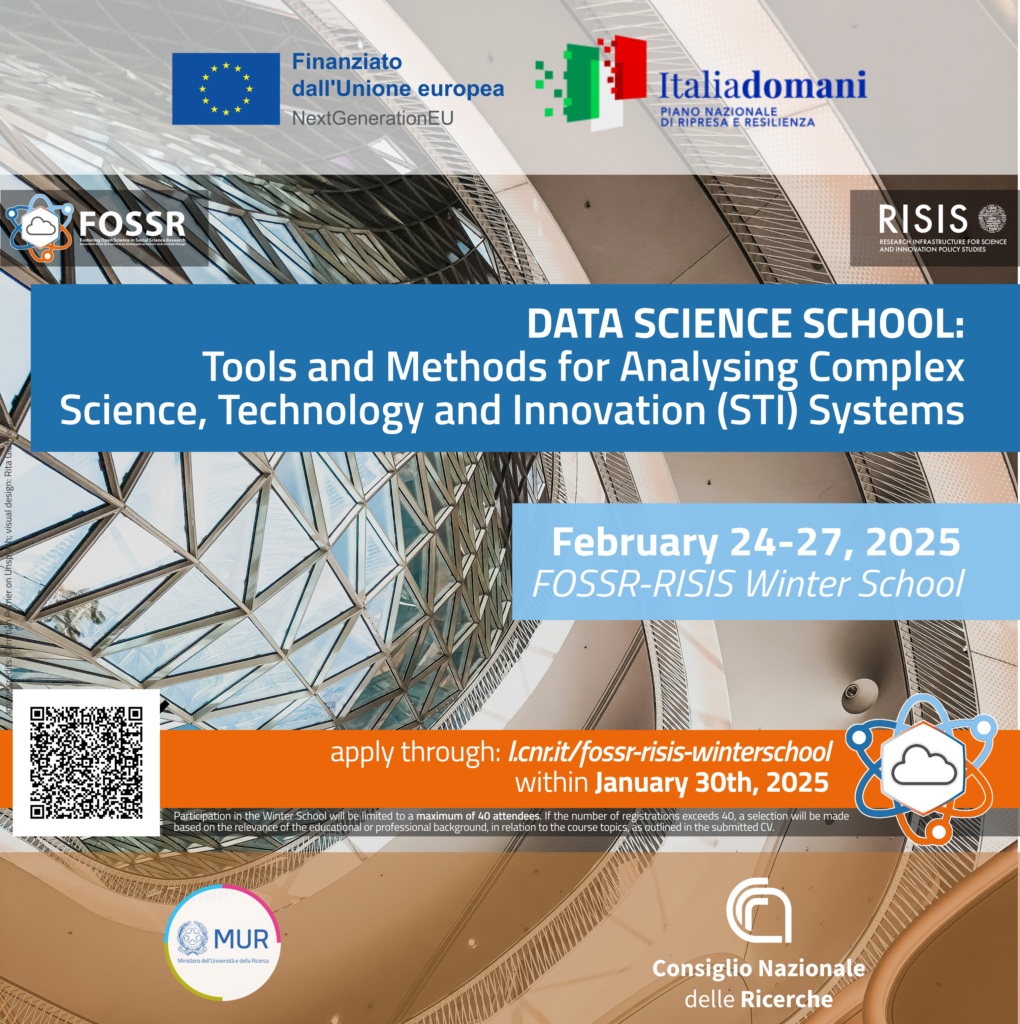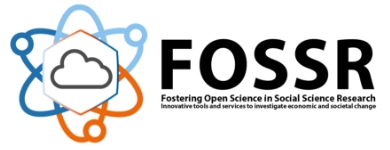 Four modules, each focusing on a different data analysis methodology – Network Science, Bayesian Networks, Machine Learning, and Spatial Model – provide an overview of the statistical techniques essential for working with the Open Science Cloud developed by the FOSSR project.
Four modules, each focusing on a different data analysis methodology – Network Science, Bayesian Networks, Machine Learning, and Spatial Model – provide an overview of the statistical techniques essential for working with the Open Science Cloud developed by the FOSSR project.
At the end of the FOSSR-RISIS Data Science School, which focused on tools and methods for analysing complex science, technology, and innovation systems, we tried to take stock of the proposed training offer by asking the participants for their impressions.
“Complex concepts explained in a simple but rigorous way: I believe that this was the greatest strength of this Data Science School – summarises one of the participants, Simona Tarra – that is, to have allowed the participants to approach specialised topics in a truly accessible way, while at the same time maintaining an excellent level of in-depth study.”
This aspect was emphasised by several participants, who also appreciated the balance between theory and practice: “The course explained different statistical methods – points out another student, Loreta Isaraj – and for each of them, it offered a very balanced combination of theoretical and practical parts, especially regarding the implementation in R, and this seemed to me to be a real strong point of the course”.
A training proposal that, as Antonio Zinilli, coordinator of the Data Science School, points out, differs from others dealing with similar topics mainly because of its multi-methodological approach: “Usually we focus on just one technique – Zinilli explains – perhaps going into much detail, whereas we have proposed four different ones in order to give young researchers in the social sciences, who are our main target, as broad an overview as possible of the most innovative methodologies available to them”.
An in-depth exploration of advanced statistical techniques and methodologies explicitly applied in the context of research infrastructure, emphasizing their practical use. As another participant, Angela Zanoni, points out: “The use of real datasets and the provision of the codes for the applications explained during the lectures was a great added value, making the course material a truly valuable resource for those who work with research data”.
The interactivity of the lectures, which alternated between theory practical sessions with R and Q&A sessions, allowed participants to apply the concepts learned in real-time, making them accessible to those whose backgrounds were not necessarily quantitative. “Taking methods that seem far removed from the social sciences in such a concrete way – said another enrolled student, Flavia Domitilla Carino – made complex statistical concepts usable even for those who, like me, come from a more qualitative background, in a truly inclusive way”.
“What I appreciated most was the explanation of the logic behind the methods – concludes Andrea Micarelli, another of the many participants – because what I have learned now allows me to know how to answer the question: ‘How can the different statistical tools help me to answer my research question?’ A researcher cannot ask for more from a course”.
Commenting on the results, Antonio Zinilli says: “This school is important because it offers researchers in the social sciences innovative tools that allow them to keep up with new methodologies, combining quantitative approaches with the needs of qualitative analysis”.
Zinilli concludes that the two main intentions were to combine the theoretical approach of the different models with the empirical one and introduce social science researchers to the most innovative statistical analysis models.“We are confident that we have succeeded in doing both and offering a useful educational proposal”.
To view course materials: https://zenodo.org/records/14994005




